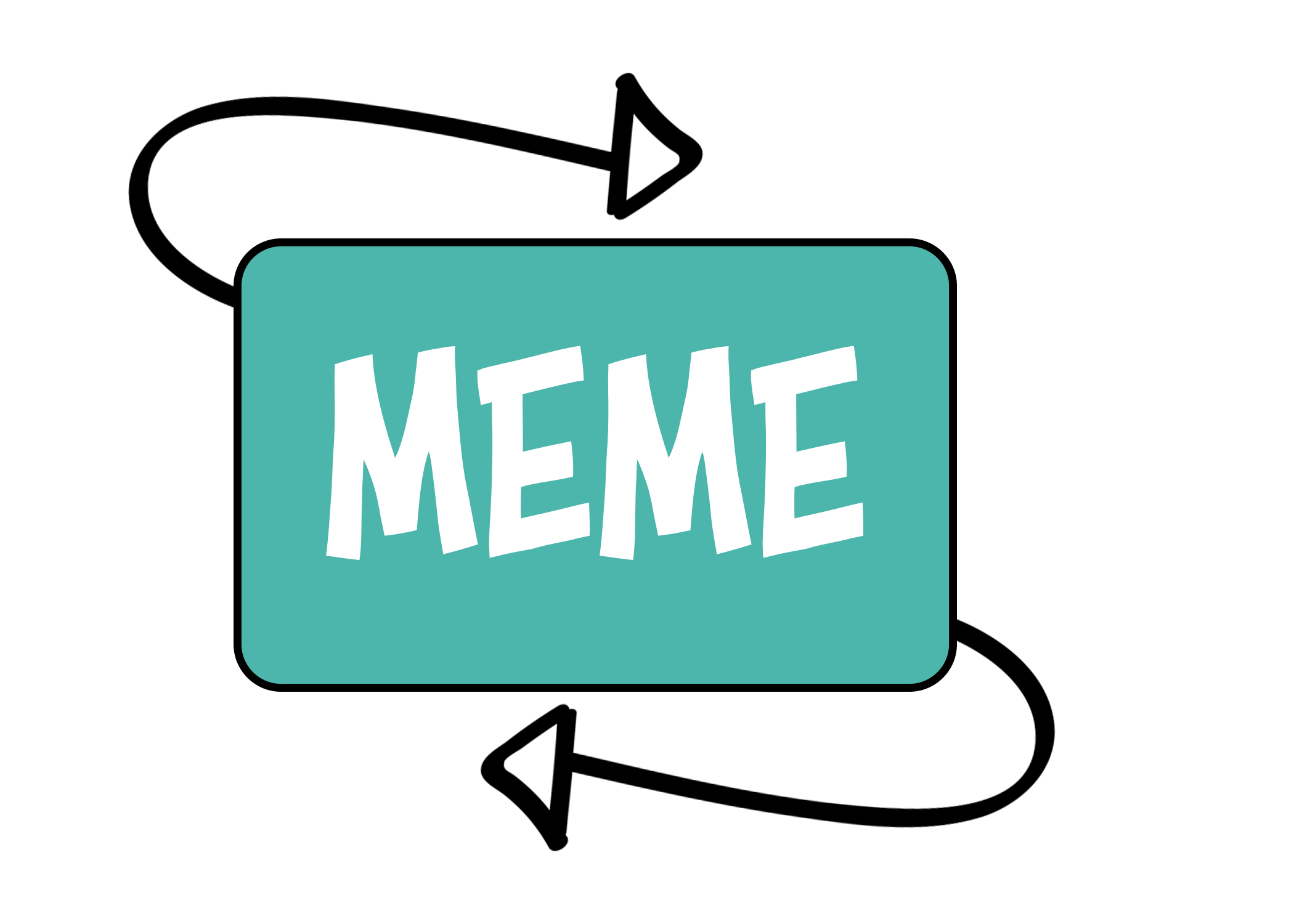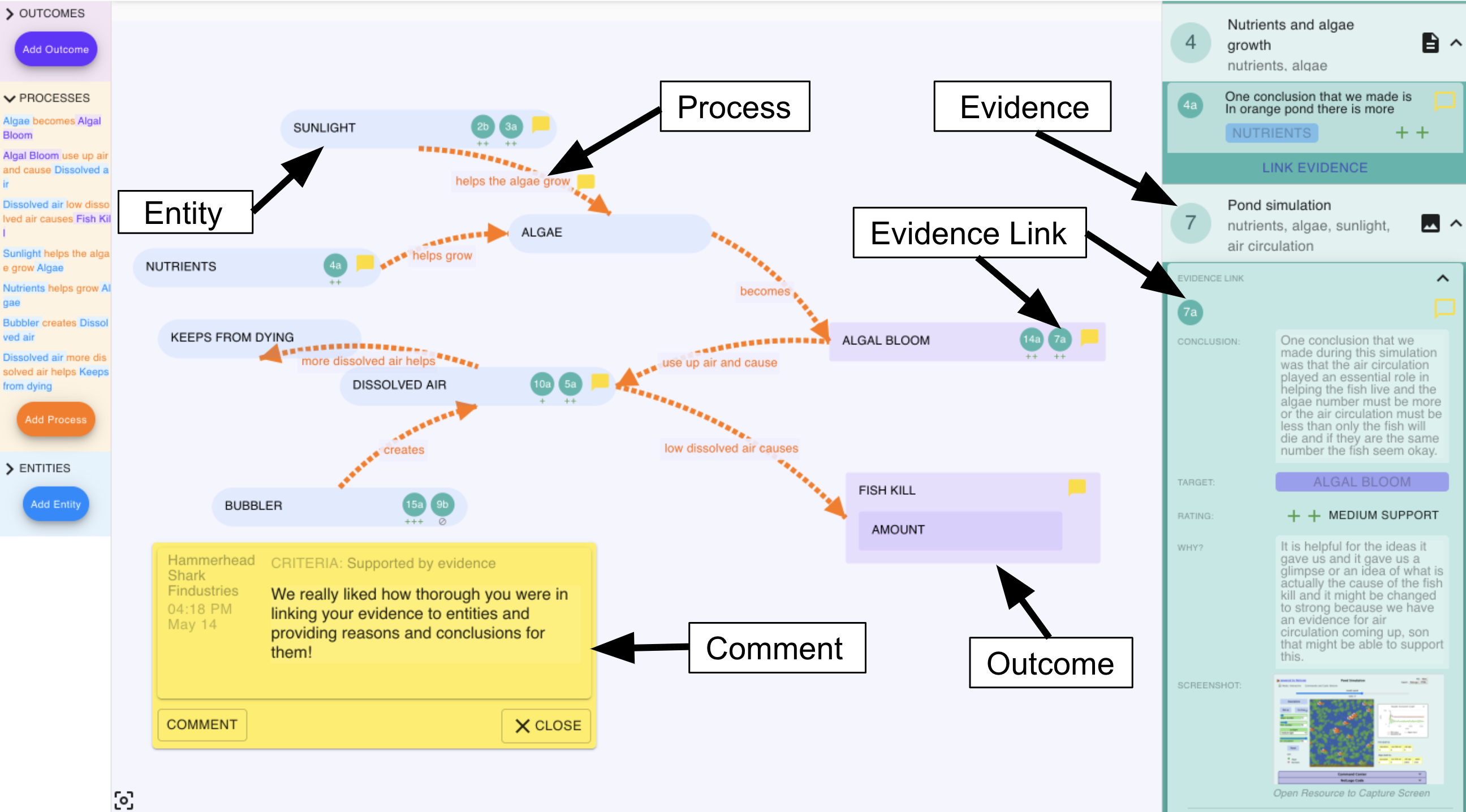
Modeling and Evidence Mapping Environment
About MEME and SEEDS
The Modeling and Evidence Mapping Environment (MEME) was developed to help users build qualitative models of scientific phenomena, and revise those models based on evidence.
MEME is modeled after a number of previously succesful approaches to helping students represent their emergent ideas, such as concept mapping. However, we have added 3 key sets of features that we believe set MEME apart, while supporting our research into how students develop and refine scientific models:
- Evidence Links: MEME included a built-in resource library so that users can identify evidence for or against a portion of their model, link it directly to their model, and explain how it fits (or does not).
- Systems Thinking: MEME is organized around what we know about systems thinking, building on the The Phenomenon-Mechanism-Components (PMC) Framework (Hmelo-Silver et al., 2017). This framework focuses on how a system can be viewed from multiple interacting levels at once, from the superficial components, starting with the superficial components within the system, which interact through a range of mechanisms, which produce the observable phenomenon of interest. In MEME, each model represents a phenomenon, and is built up of entities and processes (we found students viewed these terms as more intuitive). We also added distinct observable “outcomes” to the modeling environment as learners appeared interested in representing these explicitly (Danish et al., 2021).
- Integrated communication and feedback: To support students in discussing, critiquing, and revising their models, MEME includes a commenting feature that allows instructors and peers to offer feedback on each model. In addition, these comments are organized around collective criteria that users can develop around what makes for a good model (Murphy et al., 2021).
We have been exploring students’ use of MEME as part of the NSF-funded Scaffolding Explanations and Epistemic Development for Systems (SEEDS) research project. Our goal in this project is to explore how students think about different kinds of evidence, and how they use evidence to evaluate or refine their scientific models—key practices for engaging in constructing scientific knowledge.
Context of Use
Meme was originally developed for use in 5th grade science classrooms where students used it to explore eutrophication (Danish et al., 2021). You can see more about this in our resources page. However, we have also used it in grduate seminars, undergraduate courses, and to support our design efforts as we attempt to develop Design Based Research (DBR) conjectures and plan our next study. In short, we think it can be helpful in any context where it is useful to collaboratively develop a model, particularly if you wish to link that model to evidence or other resources.
Funding for the the iterations of the SEEDS Project
| Grant Name | Funding Agency | Grant Number | Co-PIs |
|---|---|---|---|
| DRL: Collaborative Research: Engaging students in discourse about criteria for judging scientific models | NSF | 2300832 & 2300831 | Ravit Duncan, Joshua Danish, Cindy Hmelo-Silver, Clark Chinn |
| DRL: Collaborative Research: Scaffolding Explanations and Epistemic Development for Systems | NSF | 1761019 & 1760909 | Joshua Danish, Cindy Hmelo-Silver, Ravit Duncan, Clark Chinn |

